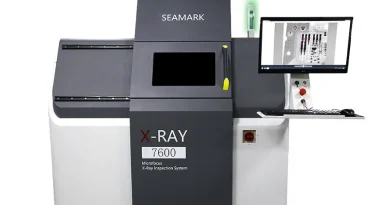FIX TRADE – A simple explanation of SMD processing.
Fix Trade gives a simple explanation for SMD processing
Surface Mount Devices, Surface Mount Technologies.
What is SMT Pick and Place Machine?
An SMT pick and place machine, also called pick and place robot, picks and places SMD electronic components onto the PCB prior to SMD soldering. These machines generally contribute to about 50% of the total cost of a complete SMT production line.
Some surface mount placement machine (pick and place machine) are very versatile and are capable of placing many different electronic components used in electronics, while others are dedicated to a few component types.
Pick and Place machines use vacuum pickup tools to hold the components. Few others also use vision-assisted alignment. In general, pick-and-place machines offer better speed, accuracy, and flexibility than through-hole insertion machines.
Most of the pick and place machines assures an efficient placement of numerous units like resistors, transistors, integrated circuits, capacitors on one or more PCBs at lightning speed.
FIX TRADE knows which machine suits your company.
What is a reflow oven?
A reflow oven is an electronic heating device that is used to solder electronic components on printed circuit boards (PCB) through surface mount technology (SMT). This technique is widely applied in the electronics manufacturing industry because it facilitates the PCBA (Printed Circuit Board Assembly) Process. There are several types of reflow ovens. They are instrumental in ensuring that electrical components are properly mounted and physical connections on the circuit board are secured in the reflow soldering process.
Reflow Soldering is the most widely used method of attaching surface mount components to Printed Circuit Boards (PCBs).
During the pick and place operation, components are placed on the board on the paste deposits. A reliable electrical and physical connection is then made during the reflow soldering process. The solder pastes melt during this process and cool down again to create a good solder joint. The aim of the process is to form solder joints between a PCB and the components on the top without causing damage by overheating.
Reflow soldering Cycle
The soldering cycle including melting and cooling is usually done in a Reflow Soldering Machine also call Reflow Oven where regulated temperatures at different stages also called Reflow Soldering Profile is set on the oven considering the type of solder paste, the number of layers in the PCB, the copper distribution on the board, the number and size of components, etc. Also, the design of the PCB assembly will influence the machine selections.
There are typically four stages for a Reflow Soldering Profile: Preheat, Thermal Soak, Reflow and Cooling.
Preheat: The temperature is raised in the oven, heating the boards and the components evenly. Here the temperature gradient is important because if temperature changes too quickly, it can cause damage to components.
Thermal soak: The flux within particles is activated to reduce oxidization of pads and leads of components and improve solder wetting.
Reflow: The solder pastes melt, and the process reaches its maximum temperature. And the component that has the lowest maximum temperature allowance will define the maximum allowable temperature.
Cooling: The solder alloys solidify to make the solder joints. If the profile is not well optimized, it can lead to poor or non-wetting of the solder joints, damaged components or cold soldering.
In Reflow Soldering, the quality of all items used during the process must be high because anything of a poor quality will lead to undesirable results. And in practice, setting the ideal Reflow Solder Profile for each assembly can be time consuming but is essential to ensure all components are fully soldered without being damaged, so it is worth the extra time and effort in order to result in a repeatable process which will consistently deliver the required results.
FIX TRADE started in 1999, as a consulting company with service in conformal coating and later added used and new machines for the electronics industry to their portfolio.
We are a service-orientated on PCB assembly (PCBA), providing high-quality and flexible services with reasonable prices in the medical equipment, telecommunication, automotive manufacturing, and more. We serve broad markets through our manufacturing locations in Europe and nowadays also worldwide.



